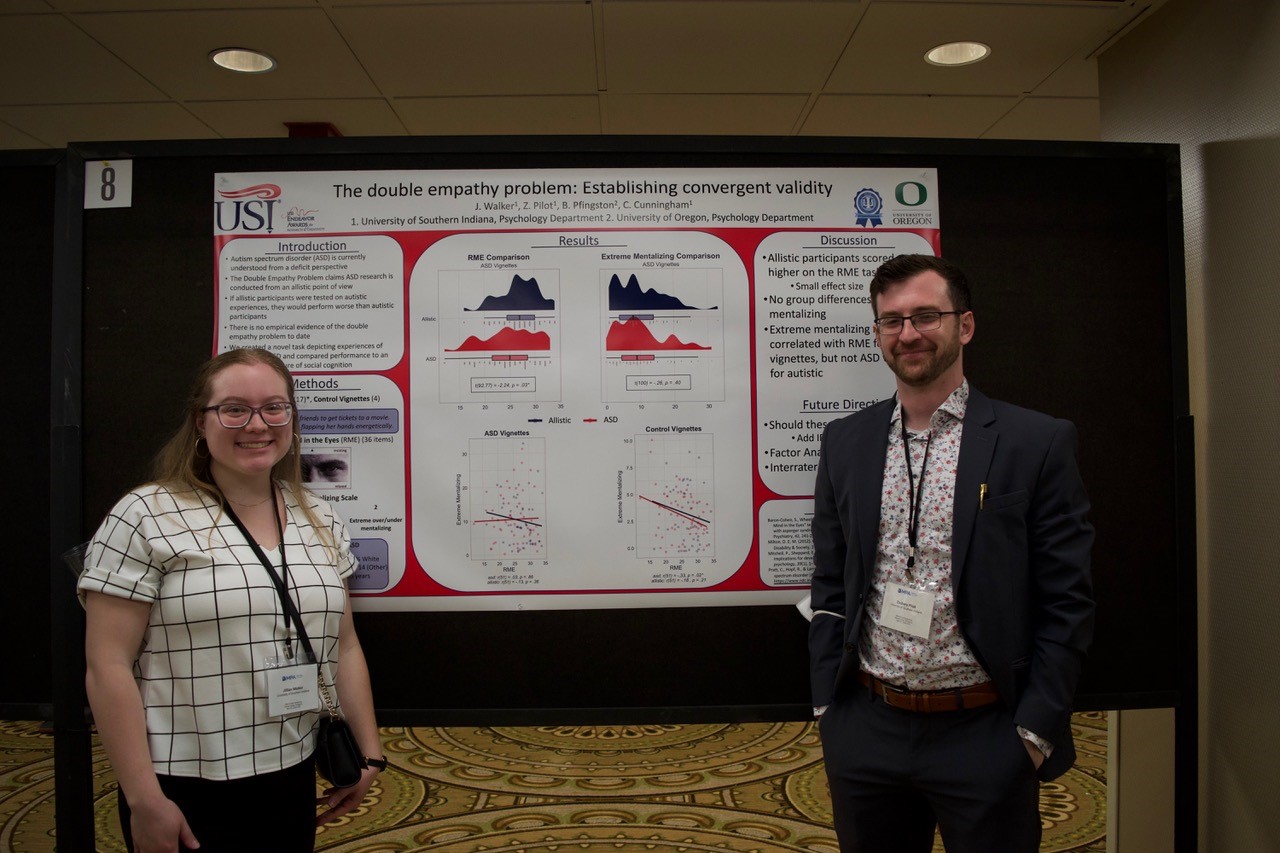Information for Presenters
A maximum of 15 minutes is allowed for an oral presentation, including time for questions. A computer, projection equipment, and presenter/clicker will be available for PowerPoint presentations.
Please arrive at least 5-10 minutes before the session in which your presentation is scheduled to load your presentation on the computer. This will make transitions from one talk to the next more smoothly. Please bring a flash drive. Alternatively, you can download your presentation from your email.
Tips to help with oral presentation:
- 1. You will have 15 minutes to share your research. It is wise to limit your talk to 12 minutes and leave 3 minutes for questions. The 15-minute time limit will be strictly enforced!
- 2. Include the rationale/introduction, hypotheses, methods, findings/results, and interpretation of your study.
- 3. Visual aids (pictures/graphs/tables) help the audience follow your talk — busy slides are difficult to follow — less is more.
- 4. It is better to talk to (and face) your audience rather than to read from slides. Slides should serve as a guide. Preparing notes and using them to tell your story is better than reading a manuscript.
- 5. Practice your talk out loud to help manage your time and facilitate the ease of presentation. Get feedback from your fellow students and faculty mentor on your slides and presentation style.
- 6. Speak slowly and project so everyone can hear and understand you.
- 7. Remember that you are the most knowledgeable person about your research in the room.
Please click here to access the UPRC PowerPoint template.
A poster session is a great time to share your research and get feedback! It will last 45-60 minutes and you should plan to be at your poster throughout this time.
Your poster/abstract will have a number next to it in the Conference Program. That is the number for the board where you’ll hang your poster. Please arrive 5-7 minutes before the session to find your number and that’s where your poster goes! Pushpins will be available to hang your poster. Consider having a handout of your poster that includes your contact information (e-mail) – this way attendees can continue to think about your work and contact you later.
Tips to help with poster presentation:
- 1. At the top of the poster space, add the title of your paper, the author(s), and affiliation. The lettering for this section should not be smaller than 1” high (e.g., Arial or Times New Roman font size of 80). All other sections of the paper should use a font size that can be read easily from 3 feet away with a height of approximately 3/8" (e.g., Arial or Times New Roman font size of 36).
- 2. The layout is important and should be logical. Information should be placed in columns so that the reader can read from top to bottom and left to right. Titles on sections help to facilitate this process.
- 3. The poster should include a super short abstract, rationale, hypotheses, methods, results/table/figure, and discussion.
- 4. The poster should be self-explanatory. You are there to answer additional questions, not to add information that should have been included in the poster. However, do not overwhelm the reader with too much detail.
- 5. Figures and tables should be as simple as possible. Ensure to include captions to help readers understand the figure. Clearly label the x- and y-axes.
- 6. Remember that your poster should be informative and pleasing to the eye, but don’t overwhelm the audience with your ideas with an overly ornate presentation.
- 7. Use color, but don’t overdo it. Color backing and/or lettering provides a finished and professional look. Do not simply tack up a set of typed pages in small font.
- 8. Prepare a ~ 60-second summary of your research and practice it out loud. Get feedback from your fellow students and faculty mentor on poster.
- 9. Speak slowly and project so everyone can hear and understand you.
- 10. Remember, you are the most knowledgeable person about your research in the room.
Please on the links to access the UPRC Poster template one and template two.
